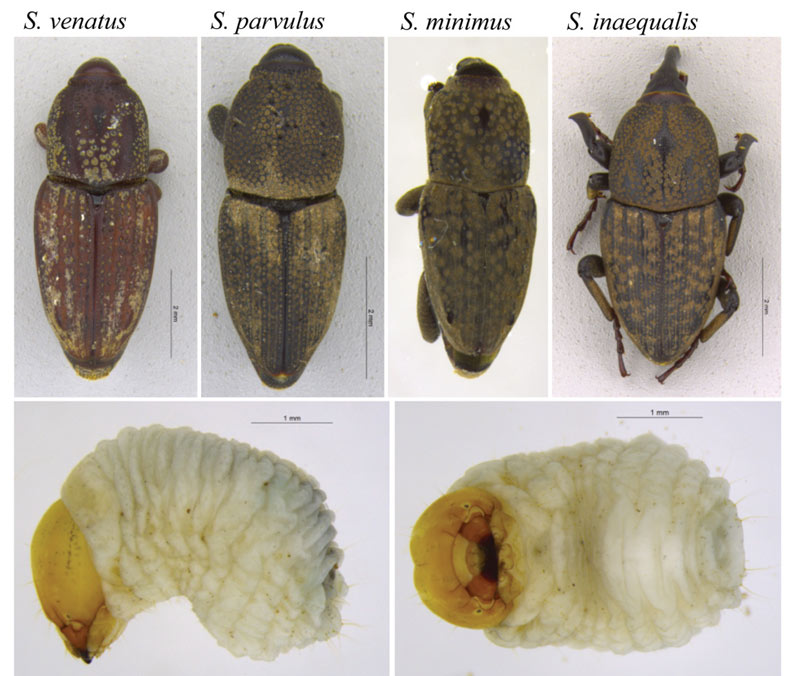
In North America, regional variation in billbug species composition and seasonal biology impede the development and implementation of integrated pest management programs. Researchers at Purdue University described the species composition of billbugs associated with turfgrass in the Midwestern U.S. using intensive adult and larval survey techniques.
They consistently trapped four species in both warm- and cool-season grasses: the hunting billbug (Sphenophorus venatus), bluegrass billbug (S. parvulus), lesser billbug (S. minimus) and unequal billbug (S. inaequalis). Their efforts allowed them to describe the seasonal biology of the hunting billbug (S. venatus) and develop a molecular technique to identify the morphologically indistinguishable larvae to the species level.
Their findings revealed two overwintered life stages (larva and adult) for the hunting billbug, and confirmed the utility of genetic markers to associate billbug life stages. This tool will be useful for understanding larval population dynamics across different climatic regions of North America.
Two overwintering life stages of hunting billbug resulted in two separate cohorts in spring, each producing at least one subsequent generation of larvae and adults during the growing season and second-generation larvae.
Degree-day models developed from these data predicted two narrow windows in which both adults and larvae could potentially be controlled with a single application of insecticides, targeting either the overwintered or first generation of this insect. One well-timed insecticide application may help managers reduce populations of both damaging life stages and eliminate the need for multiple insecticide applications targeting this insect.
— Alexandra Duffy; Gareth Powell; Jennifer Zaspel, Ph.D.; and Douglas Richmond, Ph.D., Purdue University, West Lafayette, Ind.
This research was published in Journal of Economic Entomology 111(1):304-313.
Teresa Carson is GCM’s science editor.